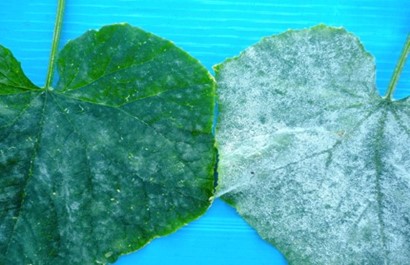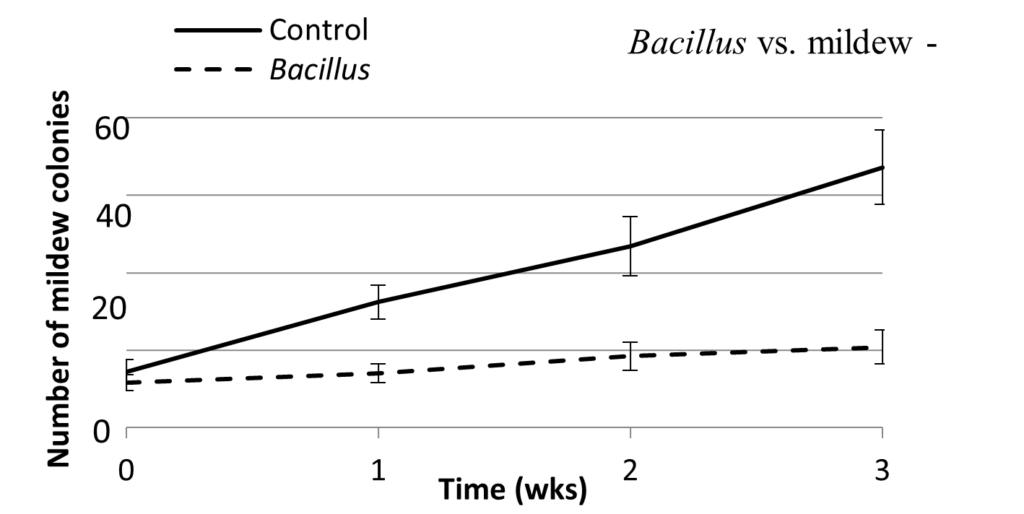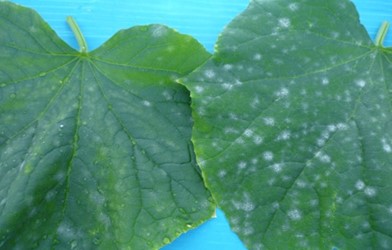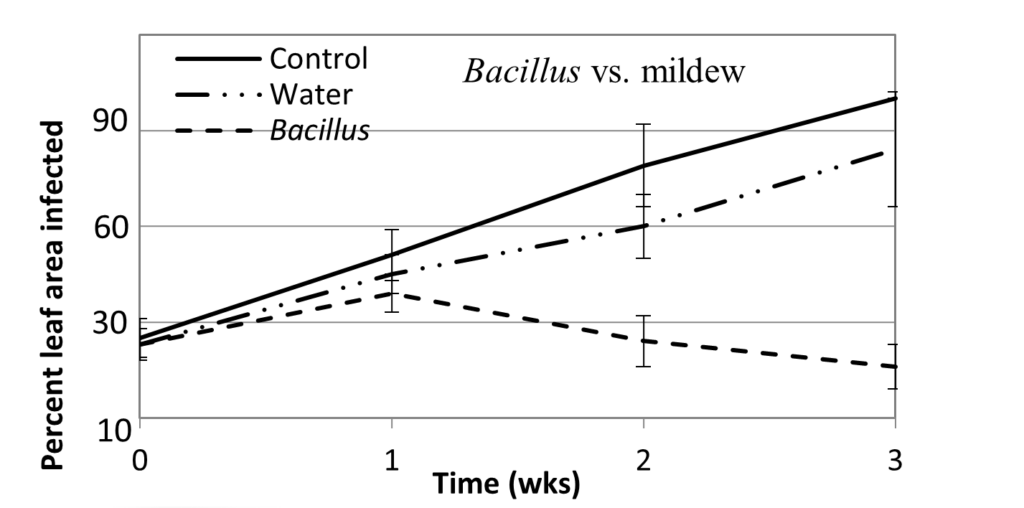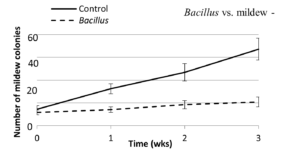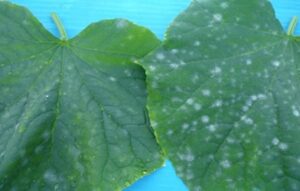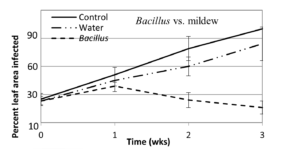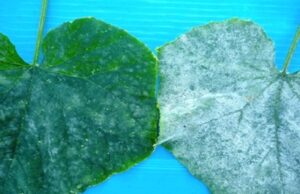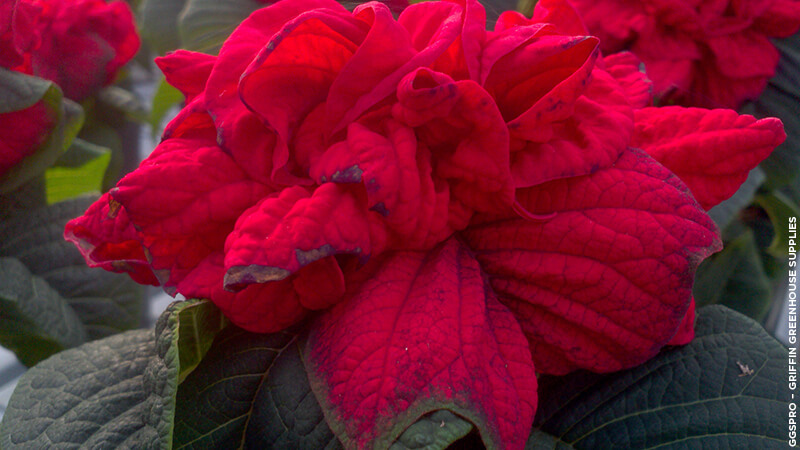Managing a Major Fungus in Greenhouse Cucumbers With Biologicals
Powdery mildew can become a problem for greenhouse cucumbers if not managed in a timely manner. The disease is easy to recognize by the white colonies that develop on the surface of cucumber leaves. These are visible evidence of growth of the mildew pathogen, which develops mycelium and spores on the leaf surface, while drawing nutrients from within the leaf using feeding structures called haustoria that are immersed within the epidermal cells. The damage caused by this disease is due to the removal of these photosynthates from the host plant. In addition, growth of the pathogen over the plant surface reduces incoming irradiation and impacts photosynthesis. Severely infected leaves will turn brown and die. The combined yield loss from infection of susceptible cucumber varieties by powdery mildew can be as high as 15% to 20%.
Disease Develops in Favorable Conditions
Disease development is favored by dense canopy development, low light conditions, and warm temperatures (70ºF to 80ºF). Higher relative humidity (>70%) favors infection by spores, while drier conditions favor colony development and production and release of spores, which result in spread of the pathogen. Spores can remain viable for up to seven days and can spread to neighboring plants. In a matter of three to seven days, new infections result in colonies appearing on leaves.
Growing resistant varieties to powdery mildew is one option for disease management; however, these are not always available. Fungicide use where permitted can reduce disease but can be costly, cause some foliar damage under warm temperatures, as well as potentially increase the development of fungicide-resistant strains of the pathogen over time.
Biological Controls Reduce Powdery Mildew
Another approach to reduce development of powdery mildew is the application of biologicals that contain active microbes. These act on the pathogen by reducing mycelial growth, spore production, or spore germination. They must be applied early before the disease gets established (when very small mildew colonies are visible) and require weekly applications. Biologicals are also subject to rapid decline in numbers if the temperatures are very warm (>80ºF) and if the humidity is low (50%) and UV irradiation levels are high (during full sunlight, for example).
To demonstrate the use of microbial biological agents, we evaluated several products that contain microbes to demonstrate their effectiveness.
The results using Bacillus spp. are described here. These bacteria are widely used to manage diseases on a range of crops worldwide and are registered for use on greenhouse vegetable crops. Many Bacillus species produce a broad range of antibiotic compounds that reduce growth of fungi, such as powdery mildew. They also produce enzymes that degrade the mycelium of fungi, reducing growth. Bacillus species produce resistant endospores that help them survive through dry conditions and avoid the effects of UV. Therefore, they are quite suited for use on agricultural crops.
Treatment Options
There are two options for application of microbials containing Bacillus — just when disease is initiated as preventative treatments, and after it has become established as eradicative treatments. We evaluated both approaches. Using a concentration of 1 liter (L) of Bacillus subtilis strain QST 713 (formulated as Rhapsody) in 100L of water, applications were made weekly as preventative or eradicative treatments. Disease was assessed as the number of mildew colonies on leaves and the percentage of leaf area infected.
The difference in the number of mildew colonies per leaf can be seen in Figures A and B, where three weekly applications reduced colony numbers from 48 to 10.
If mildew was first allowed to develop to cover about 25% of the leaf surface and then Bacillus was applied, three weekly applications reduced the leaf area infected to 15% compared to the untreated control that reached 95% (Figures C and D).
Here are a few treatment tips:
- Growers are encouraged to spray Bacillus during the morning hours when temperatures are cooler.
- Ensure good foliar coverage and repeat applications every seven days.
- Mildew control can be obtained before mildew appears as a protective measure.
- Mildew control can also be obtained when disease has started but is less than 25% of leaf coverage.
- Re-entry time after application is four hours.





